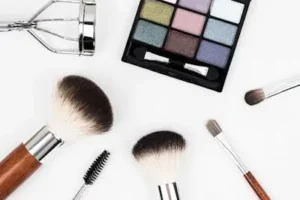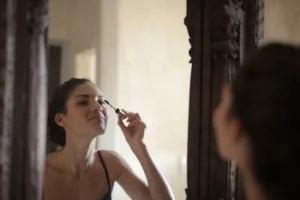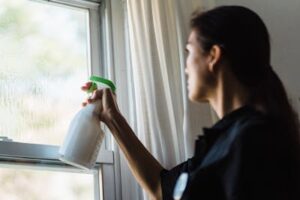Ultimate Guide to Makeup Cleaner
While makeup can be a lovely way to express yourself and flatter your facial features, it does has its pitfalls if you do not properly remove/clean it. Cue the makeup cleaner your skin and your tools both thank you for using one. In this article, you will know all about Ultimate Guide to makeup cleaner types of them, ingredients in them and how to use them properly etc. Along with FAQ’s as well!
So, here is one of my top 2 gateway drug articles on why you need a good makeup cleaner.
No doubt that a high-quality makeup remover is very crucial for you. Here’s why:
Skin Health
Clogging your pores with makeup long-term can cause you to breakout, get irritated skin and all those other unpleasant things we try not to talk about. A good makeup remover wipes them off along with any of the grime, oil and pollution from your day that has settled into your skin keeping it clean!
Tool Maintenance
Since we use makeup brushes, sponges and other tools on our face they are host to some beautiful bacterias. It will make your tools last longer, and work with all its mighty strength.
Better Application
You have a clean face, so it is important to keep your brushes and sponges equally as fresh for the best makeup application. The leftover from previous products can compromise the way you apply and blend new makeup. There is nothing like starting fresh!
Prevents Allergies
Leaving make up on for too long can cause an allergic reaction by said products. Helping your skin breathe and recover by limiting the amount of dead cells we have piled on it well, yes this might help.
Types of Makeup Cleaners

But not all makeup removers are created equal. The most prevalent examples you will find are;
- Cleansing Oils
This is perfect all for heavy makeup especially waterproof products that are more difficult to remove. High in viscosity, they have to spread on dry skin and turn into an emulsion once water has been applied so can work for all the skin types
- Micellar Water
For literally wiping the make-up from your face once you take has just dropped, go with micellar water. It has small micelles, which attract dirt and oil making this an effective cleanser without the rinse.
- Foaming Cleansers
These types are generally favored by people with oily skin Foaming Cleansers: Foamy goodness that lathers up when combined with water, giving you a profound clean while removing extra oil and makeup.
- Cream Cleansers
For hydrating side of things, cream cleansers are best (for example if you have a drier or more sensitive skin). They cleanse the skin gently, not removing excess natural moisture [from your face].
- Makeup Wipes
Not the most eco-friendly option but makeup wipes are great for quick cleansing on-the-go. They work as a fast clean up to remove makeup but are never the best method.
- Cleansing Balms
Cleansing Balms: Just like oils, cleansing balms are rich and great for removing makeup. ZenFire Dragon Fire and Ice Masque They melt into the skin & rinse clean.
Key Ingredients to Look For
Ingredients are pretty fundamental to consider when choosing a makeup remover. Other important elements to look for are as follows:
- Natural Oils
Jojoba oil, Coconut Oil and Olive Oil are the most common ingredients available to us that help break down makeup really well in order for you not to experience any tugging while removing your face off of it.
- Aloe Vera
Aloe vera is an excellent ingredient to incorporate into any makeup remover because its anti-inflammatory and hydrating, what more could you ask for?
- Glycerin
It is a moisturizer component, that means it absorbs water from the face. It prevents dryness due to which it makes your skin smooth and soft.
- Salicylic Acid
The lactic acid appears to work effectively on the acne-prone skin given that it may help to clean out acne-causing pores and get rid of pimples.
- Witch Hazel
Beneficial for sensitive skin and containing a natural asstringent in witch hazel, it can help reduce inflamation and redness.
How to Properly Use Makeup Cleanser

The process of using makeup remover is simple, but if you want the right results follow these steps:
Choose Your Cleaner
Choose the right makeup remover according to your skin type and for which make you are using. If you wear waterproof makeup, opt for a cleansing oil or balm.
Prepare Your Skin
- Oily / balm: Apply to dry skin. Wet the skin slightly (micellar water, foaming cleansers ).
Apply the Cleaner
- How To Cleanse (Cleansing Oils/Balms): Take a good amount and massage it into your skin in circular motion. Highlight the Areas where you put there most makeup
- Micellar Water: Put product on a cotton pad and swipe across your face.
- For Foaming/Cream Cleansers: (Lather in your hands and massage gently into the skin)
Rinse
The cleansing product must be thoroughly rinsed out with hot water. This can lead to rashes on your skin, so it is essential not to remove any material on the area.
Follow Up
After One Step Moisture Up Pads, use a good moisturizer that adds moisture to the skin. This step is important, especially of you applied something would dry out your skin.
Cleaning Your Makeup Tools

Cleaning up your tools is almost as important as cleaning up the skin:- This is an effective way to do it:
Brushes
How Often You Should Do It: Clean your makeup brushes once a week.
The way: A care detergent specific brush cleaner Spray your cleaning solution into the bristles, swirl it in your palm or on a thick clean cloth until all of the makeup is no longer visible. Wash thoroughly and reshape bristles while laying flat to dry.
Sponges
Have to do it Frequency: When used frequently you should clean your makeup sponges after every use if possible.
HOW TO: Moist the sponge and put a mild soap into it. Rub in until the make up is gone. Wash it off then air dry.
Wands and Other Tools
Wands should be disposed after each use to avoid contamination. When it comes to cleaning, essentially use the same brushwork method ( or similar ) for any other tools.
FAQs
1. When should I wash my cosmetic brushes?
Aim to clean them once a week if possible as bacteria and extra make up can accumulate.
2. Do baby wipes remove makeup?
Summed up in a nutshell: Baby wipes are convenient but they probably don’t effectively remove all makeup. Opt for a specific makeup remover instead.
3. Can Micellar Water be used on all skin types?
Micellar water does, yes — even those with oily sin could likely get more of a clean feeling from foaming cleansers.
4. Surely, you would not want to use anything else after this!
Honestly, you can do it at home from olive oil and castile soap with water too.
5. How to take off long-wear and waterproof makeup
They prove most effective if you remove long-wear and waterproof makeup with cleansing oils or balms. The key is for the mask capsules are dry, apply them directly from there to your skin and then rinse off under running water.
6. How to Clean Your Make-up Tools Using Alcohol-Based Supporters
Alcohol: Alcohol can work to disinfect, but it is also a harsh sanitizing agent that will dry out your brush. We recommend a mild soap, or an appropriate cleaning product.
7. If the skin reacts to a makeup cleaner
If at any time you experience irritation or an allergic reaction and it’s not going away, STOP using the product
8. Is dish soap good for brushes?
Dish soap works well, but tends to be a more harsh product for the use on brushes. Go with a mild cleanser formulated for makeup tools.
9. But how do I make my own makeup remover?
You can mix water with oil that you have to remove your makeup, a forever and natural option is olive or coconut oil. Shake well before use.
Conclusion
No matter what, a good makeup cleaner whether in the form of cleansing gel or wipes, maybe even your favorite oil cleanser at home is absolutely necessary not just because it maintains the health and balance of skin but also keeps all those new brushes/ sponges clean and dry. When you know what type of cleaners is appropriate for your skin, their ingredients and how to use them as well, you will have a flawless healthy face. Cleaning To clean your brush regularly helps a lot, as it keeps your skin radiant, and in one smooth swing you can apply makeup or any other thing better than dirty brushes.
Follow these steps, because nothing beats a good beauty hygiene. A good makeup cleanser, and you are halfway to have the beautiful glow! If you want to know more about us than click here:
Difference table of the Content
| Aspect | Current Version | Suggestions for Improvement |
|---|---|---|
| Active vs. Passive Voice | Some passive constructions present (e.g., “are host to some beautiful bacteria”). | Convert passive sentences to active voice for better engagement (e.g.) makeup tools host beautiful bacteria |
| Transition Words | 24% transition words (low for fluid reading). | Incorporate more transition words to improve flow (e.g., “Additionally Moreover “Consequently”). |
| Clarity | Some sentences are lengthy and complex. | Break down long sentences into shorter ones for easier understanding. |
| Engagement | Informative but lacks a conversational tone in some areas. | Use a more conversational tone to make it relatable (e.g., “Let’s dive into the world of makeup cleaners!”). |
| Structure | Clear structure with sections but could use more headings/subheadings for readability. | Add subheadings within sections to guide readers (e.g., under “Types of Makeup Cleaners,” create headings for each type). |
| Conclusion | Summarizes key points but could be more impactful. | Strengthen the conclusion by reiterating the importance of makeup cleaning in daily routines. |




